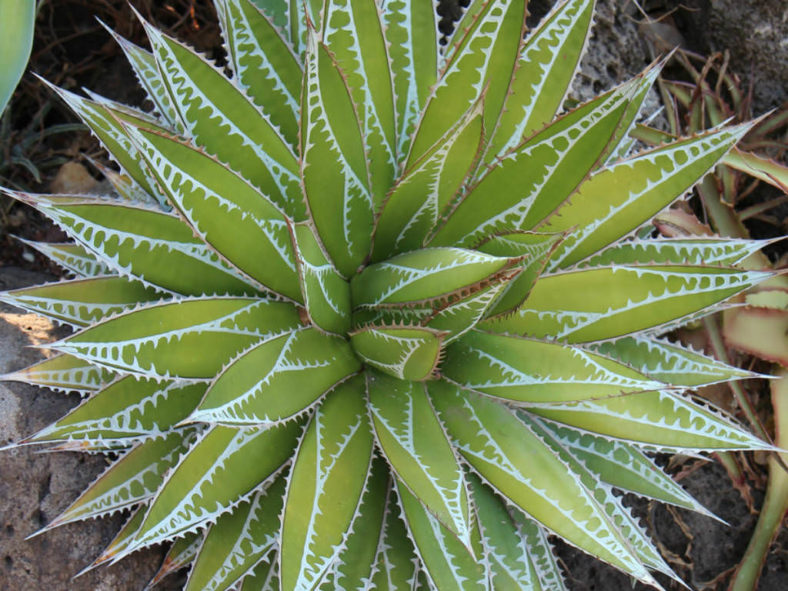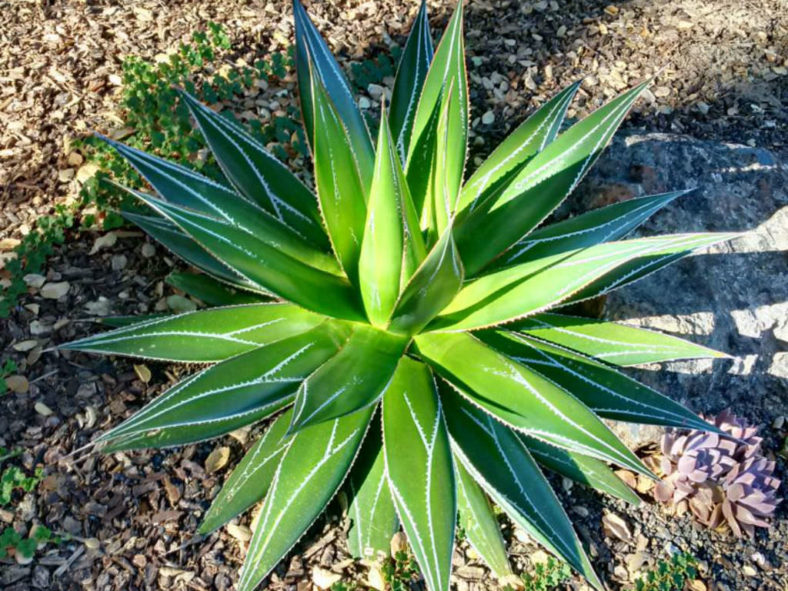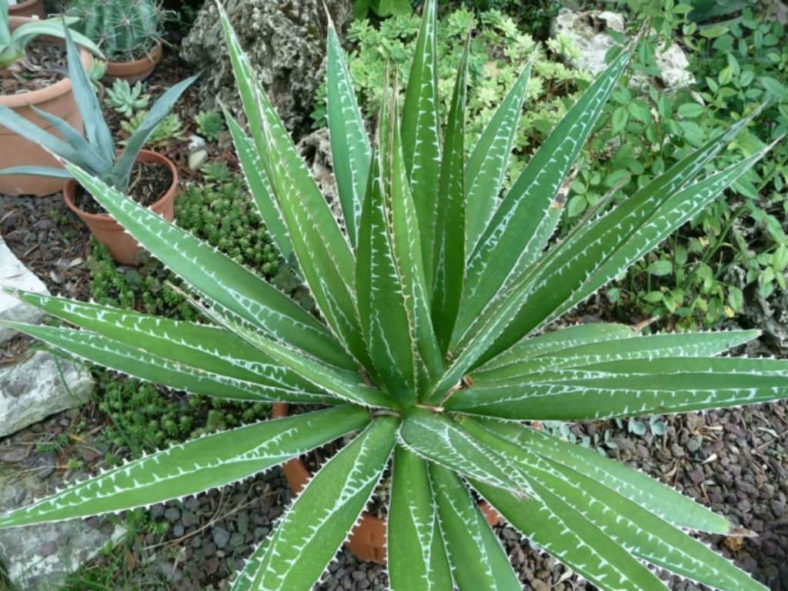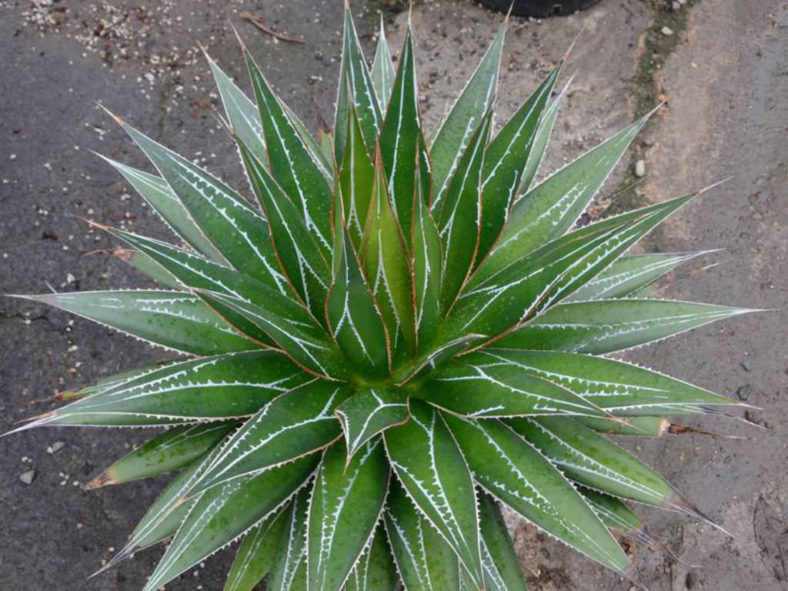Scientific Name
Agave impressa Gentry
Common Name(s)
Maguey Masparillo (in Mexico)
Scientific Classification
Family: Asparagaceae
Subfamily: Agavoideae
Genus: Agave
Etymology
The specific epithet "impress" (pronounced im-PRESS-uh) means "pressed, printed, stamp" and refers to the bud-printed leaves.
Origin
Agave impressa is native to Mexico (Nayarit, Sinaloa).
Description
Agave impressa is an attractive succulent that forms a usually solitary rosette of yellow-green leaves marked with pairs of white imprints. The leaves are lance-shaped, measuring up to 2 feet (60 cm) long and 3.6 inches (9 cm) wide. In full sun, they take on a red hue around the edges.
The flowers are greenish-yellow and appear on an erect, unbranched spike from late winter to early spring. The flower spike can grow up to 10 feet (3 m) tall.

How to Grow and Care for Agave impressa
Light: These plants require full sun to part shade. If you are growing Agaves indoors, choose a bright, sunny window with as much sun as possible. Agave plants love going outside from spring to fall.
Soil: Agaves will tolerate most soils as long as they have good drainage, but they prefer sandy or rocky soil.
Hardiness: Agave impressa can withstand temperatures as low as 25 to 50 °F (-3.9 to 10 °C), USDA hardiness zones 9b to 11b.
Watering: Mature plants are very drought tolerant. From spring to fall, water your Agave thoroughly when the soil mix becomes dry. In winter, water sparingly about once a month. Plants in containers require more frequent watering than those in the ground.
Fertilizing: Give your Agaves a small amount of fertilizer in the spring during the first two years.
Repotting: When the pot becomes full of roots, it becomes pot-bound. If you notice your Agave becoming pot-bound, repot it with new soil in a slightly larger pot than the old one.
Propagation: Since it can take years to produce seeds, Agaves are usually propagated by offsets.
Learn more at How to Grow and Care for Agave.
Toxicity of Agave impressa
Agave impressa is not toxic to humans but may be mildly poisonous to children and pets.
Links
- Back to genus Agave
- Succupedia: Browse succulents by Scientific Name, Common Name, Genus, Family, USDA Hardiness Zone, Origin, or cacti by Genus
Photo Gallery
Click on a photo to see a larger version.


